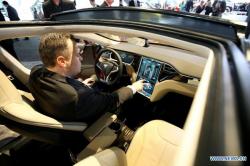 Many people assume that safer cars always mean lower insurance rates. While this used to be true in the days of daytime running lights being a major safety innovation, many of today’s advanced safety features do not lower premiums.
Many people assume that safer cars always mean lower insurance rates. While this used to be true in the days of daytime running lights being a major safety innovation, many of today’s advanced safety features do not lower premiums.
Hi-tech features that require apps, computers and other expensive electronics to function are actually more expensive to insure.
High safety vs. high cost
Some of the best modern cars boast crash-prevention systems and other state-of-the-art technologies. From blind-spot detection to parking assist, features that include sensors and cameras are costly but are included on most modern vehicles.
One of the reasons that insurance for vehicles with these features is so expensive is that there are limited replacement parts. Another major expense is the cost of digitally calibrating a system when it is not working properly.
Insurance companies say that safety features could contribute to reduced collision statistics in the future. But, they also point out that there are not enough of the newest vehicles with these features on the road to make a huge difference right now.
Many drivers are still using older cars that lack some of the latest technologies, which work best around other vehicles with similar technologies.
Accident rates are on the rise, and insurance companies pass on the costs to consumers in the form of rate increases.
In 2016, one automotive company reported that nearly 15% of the cars it sold had anti-collision technology. According to insurance experts, about 50% of vehicles on the road should have such technology if overall accident rates are to be reduced.
Insurance costs increase
People who buy cars that are loaded with hi-tech safety features are not the only individuals paying more for insurance.
Every policyholder must pay more for liability coverage, which is the mandatory minimum for all drivers. If a driver who only carries liability coverage crashes into a new vehicle that is loaded with safety features, the driver is responsible for the higher damage costs.
While insurance companies are keeping their increases below 10%, the rate changes are enough that drivers everywhere are noticing the difference.
Safety discounts
Some insurers still offer safety discounts for drivers who purchase vehicles with hi-tech safety features.
The safety discounts are based on devices that drivers plug into cars with compatible technologies, and the devices measure driving habits. One carrier offers discounts for vehicles with rear-end safety braking. Experts say that 40% of crashes could be avoided if all cars had this technology.
While hi-tech safety features may be great for improving safe driving, they are costly in new cars. For all budget shoppers, it is important to call us to inquire about rates before buying a specific vehicle.
Although this insurance issue may leave some drivers with tighter budgets dismayed now, the good news is that more companies will start offering discounts in the near future. To learn more about rates and changes, contact us.
